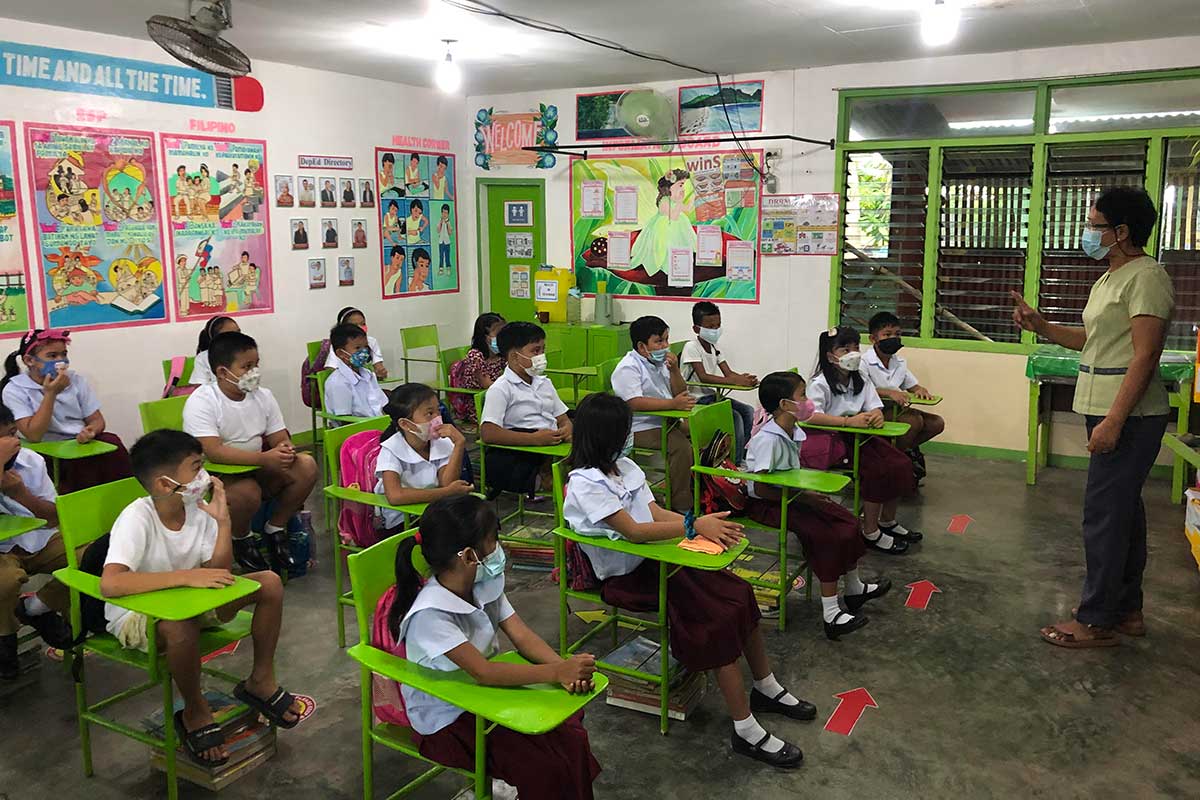
By John Noel E. Herrera and Glazyl Y. Masculino
As school year 2022-2023 officially started on Monday, Aug 22, 2022, the Department of Education reported that majority of the schools in the region opted for the blended learning modality.
Data from DepEd-6 indicated that 2,951 public elementary, integrated, and secondary schools in Western Visayas applied both online and in-person learning experiences which will run until Oct 31.
The blended learning modality is divided into three days of in-person classes and two days of distance learning.
Education Secretary and Vice President Sara Duterte had earlier ordered that starting Nov 2, public and private schools all over the country must transition to five days of in-person classes.
DepEd-6 data also showed that of the 3,220 public elementary schools in the region, 2,284 opted to use the blended learning modality while 22.42 percent, or 722 schools, chose the five-day in-person classes, and 21 schools continued to deliver education using distance learning.
Around 78.95 percent, or 150 out of the 190 integrated schools in the region, shifted to blended learning; 37 schools chose the five-day in-person classes, and only three schools opted to continue the full distance learning.
Also, 517 public secondary schools opted for blended learning, while 99 schools shifted to five-day in-person classes, and 19 schools still continue full distance learning.
DepEd-6 Spokesperson Hernani Escullar Jr said that in the middle of the transition period, those schools that opted for the blended learning can shift to four-day in-person classes with one day for distance learning, while the schools implementing the full distance learning modality can transition to in-person classes.
“As provided in our school calendar, in the middle of the transition period, they can shift to four-day in-person classes with one day of distance learning. Come November 3, all classes in public and private schools in the region should already be transitioned to five-day in-person classes,” Escullar said.
If COVID-19 cases emerge in learning institutions, Escullar added that “the schools already made their Emergency and Contingency Plan in case there will be learners or personnel that have or show covid-like symptoms.”
As of Aug 18, there were already 1,690,063 learners enrolled in public and private schools in the region.
‘SYSTEMATIC’, ‘ORDERLY’
Meanwhile, the opening of face-to-face classes in Bacolod City and in Negros Occidental was successful, according to the local Department of Education (DepEd) office.
Despite the rain, thousands of students were excited to go to school, according to Celestino Nifras, division coordinator of Brigada Eskwela, DepEd-Bacolod.
Nifras said 136,480 students out of their 152,400 target, which is equivalent to 89.55 percent were enrolled here for this school year, as of Aug. 22.
Of the said number, 107,385 elementary pupils and high school students were enrolled in public schools while 29,095 were enrolled in private schools here.
Nifras said they are positive that they can reach or even exceed the target number of enrollees, as enrollment is still ongoing.
She added that the opening of classes went smoothly in all 70 public elementary and secondary schools.
Nifras said they have not encountered any problem so far, as they are still in the transition period until October 31, 2022.
But he assured that they are prepared for the full implementation of face-to-face classes in November.
Meanwhile, DepEd-Negros Occidental spokesperson Ian Arnold Arnaez, said that the opening of classes in the province was systematic and orderly, despite minimal problems such as a shortage of classrooms because of the increase in the number of students.
Despite this, Arnaez said that teachers were able to address the problem by dividing the students into two batches.
Arnaez said that 295,797 students were enrolled in the province for this school year, which is equivalent to 87.78 percent.
The students included 150,307 in public elementary schools, 86,741 in public junior high schools, 38,560 in public senior high schools, 1,636 in integrated schools, and 18,553 in private schools.
















